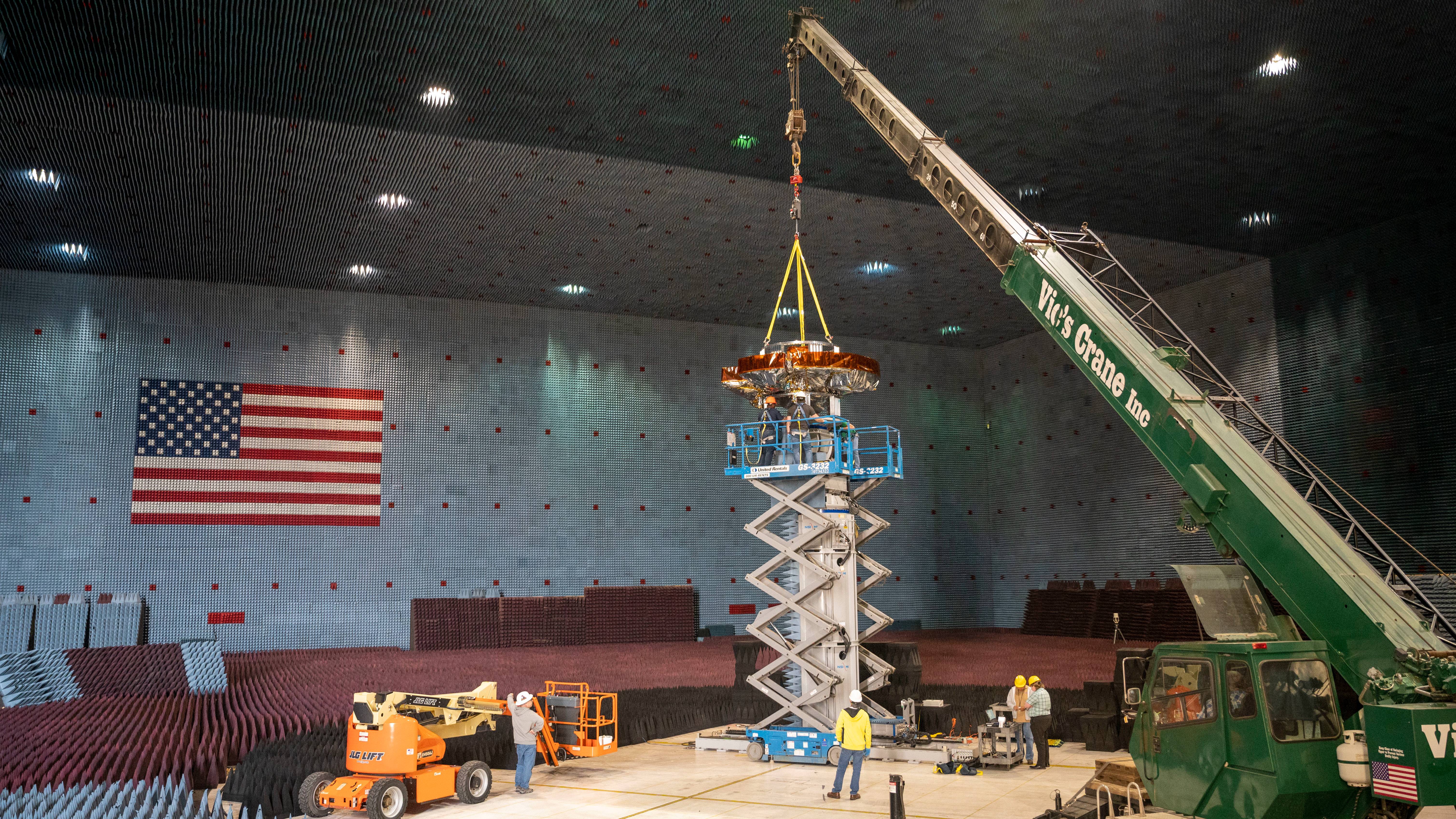Pentagon gearing up to launch 1st experimental navigation satellite in 50 years (video)
The Pentagon is preparing to launch a test craft that could improve the nation's satellite-navigation capabilities.
The spacecraft, called Navigation Technology Satellite-3 (NTS-3), will be the first U.S. experimental navigation satellite to take flight since NTS-1 and NTS-2 launched in the 1970s.
NTS-3, which was developed by L3Harris Technologies, recently completed testing at the Benefield Anechoic Facility (BAF) at Edwards Air Force Base in California. The specialized facility enabled technicians to test the satellite's systems without interfering with or inadvertently jamming nearby air, auto and other GPS (global positioning system) signals.
Related: How GPS systems help people navigate
The novel technology onboard NTS-3 is designed as a response to the increasing potential for threats to existing satellite-navigation constellations. According to a press release from the U.S. Space Force, "resilient approaches to augment the GPS system are needed to maintain users' access." The new satellite will also test technologies that allow GPS connections to be maintained in military conflict zones.
NTS-3 is going to "help with all of our GPS systems," Amarachi Egbuziem-Ciolkosz, an engineer with the 772nd Test Squadron, said in the press release. "It's probably going to affect so many lives, not just military but commercial alike."
The BAF is the largest anechoic testing site in the world, but this was the facility's first test of a satellite in decades.
Breaking space news, the latest updates on rocket launches, skywatching events and more!
"It is a quiet enough chamber that protects aircraft and other GPS users outside of the facility," NTS-3 program manager Ariel Biersgreen said in the same statement. "We needed to have a shielded area large enough to keep the energy of the testing inside the facility. Across the board, the BAF fit the bill in a way no other facility in the United States really could."
"Whether it be airline schedules, takeoffs and landings at airports or military operations, NTS-3 is taking this a step further, because we are doing a demonstration of advanced signals and signal flexibility," added NTS-3 chief engineer Thomas Roberts. "Our ability to get that job done is dependent on the success of this testing facility."
NTS-3 is on track to launch near the end of this year. Before that happens, however, it must undergo thermal vacuum tests at Kirtland Air Force Base in New Mexico. There, the satellite will be exposed to a simulated space environment to ensure its ability to function as expected once in orbit. NTS-3 will operate in a near-geosynchronous orbit for approximately one year, if all goes to plan.
According to the press release, the recent successful testing at BAF was a collaborative effort of the U.S. Air Force and Air Force Research Lab, the Space Force and NASA's Jet Propulsion Laboratory, all of whom "had critical roles in this historic testing of the NTS-3 satellite."

Josh Dinner is the Staff Writer for Spaceflight at Space.com. He is a writer and photographer with a passion for science and space exploration, and has been working the space beat since 2016. Josh has covered the evolution of NASA's commercial spaceflight partnerships and crewed missions from the Space Coast, as well as NASA science missions and more. He also enjoys building 1:144-scale model rockets and human-flown spacecraft. Find some of Josh's launch photography on Instagram and his website, and follow him on X, where he mostly posts in haiku.

